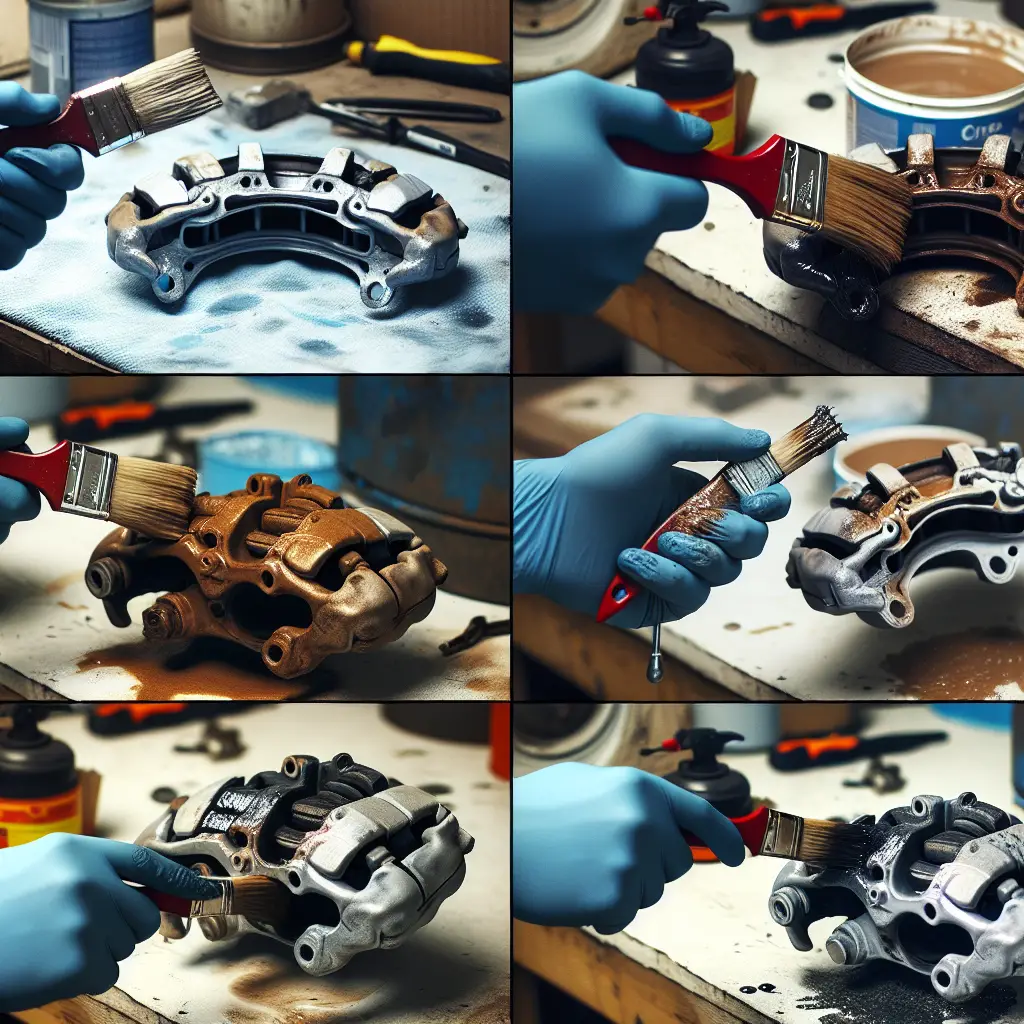How to Strip Brake Caliper Paint: A Step-by-Step Guide for Automotive Enthusiasts
When it comes to maintaining your vehicle’s appearance and ensuring optimum performance, brake calipers are often overlooked. Painting your brake calipers can give your car a crisp, customized look while also providing a layer of protection against rust and corrosion. However, over time, paint can chip, fade, or you may simply desire to change the color. This is when stripping the paint becomes necessary. In this article, we’ll walk you through the process of stripping brake caliper paint, focusing on efficiency, safety, and the best practices for a DIY project.
Step 1: Safety First
Before you begin, safety should be your top priority. Make sure you’re in a well-ventilated area, and it’s essential to wear protective gear, such as safety goggles, gloves, and a respiratory mask to protect yourself from harmful fumes and debris. Remember, you’ll be dealing with chemicals and possibly flying paint particles.
Step 2: Remove the Wheel
To access the brake calipers, start by lifting your vehicle using a jack and securing it with jack stands. Remove the wheel to expose the brake caliper. Consult your vehicle’s manual for specific instructions on how to properly lift and support your vehicle.
Step 3: Disassemble Caliper Components
Carefully remove the brake caliper from the brake rotor. You’ll want to detach the caliper from the brake line; make sure to plug the brake line to prevent fluid leakage. Depending on your vehicle model, this step may vary, and you should refer to a credible service manual or a professional mechanic for guidance (Haynes Manuals are a trusted source for vehicle-specific information). Remember to also remove any caliper hardware such as brackets, bolts, and slides.
Step 4: Selecting a Paint Stripper
Choosing the right paint stripper is critical. There are several types of paint strippers available, and they vary in strength and chemical composition. Some are more environmentally friendly, while others are extremely harsh. Products like Citristrip are considered less toxic and have a citrus base, which is better for small DIY projects. Check out online reviews and consult with local automotive professionals to determine the best option for your needs.
Step 5: Apply Paint Stripper
Once you have selected an appropriate paint remover, it’s time to apply it to your calipers. Typically, this is done using a brush, and the stripper should be applied generously. Be sure to follow the manufacturer’s instructions on how long the stripper should remain on the calipers before removing. It’s also recommended you do a small patch test to see how the stripper reacts with the paint.
Step 6: Removing the Paint
After the suggested time has passed, use a plastic scraper to gently remove the bubbled paint. You must take care not to scratch or damage the metal surface of the caliper. For small crevices and corners, an old toothbrush or a specialized brush can be effective.
Step 7: Cleanup Process
After scraping off the lifted paint, there may be some residue left. Use steel wool or a wire brush for the final clean-up. This step will ensure that the surface of the caliper is smooth and clean, ready to be painted again if you so choose. Some experts also recommend using a sandblaster for a completely stripped finish (Eastwood is a well-regarded brand for such tools).
Step 8: Neutralize the Paint Stripper
After cleaning, neutralize the chemical reaction of the paint stripper. This can be done with a wash of soapy water or a mild detergent. Rinse your calipers thoroughly and let them dry completely before moving on to repainting or reassembly.
Step 9: Repainting (Optional)
If you’re planning to repaint your calipers, wait until they’re completely dry before starting. Make sure to use a caliper-specific paint; this paint is resistant to high temperatures and environmental factors commonly encountered by brake components. Popular brands like VHT and G2 offer products specifically for this purpose.
Step 10: Reassembly
Once your calipers are dry (and perhaps repainted), it’s time to put everything back together. Reinstall the calipers, ensuring all the components are properly secured. Then, reattach the wheel, and follow the proper procedure to lower your vehicle safely to the ground.
Final Thoughts
Stripping paint from your brake calipers can be a rewarding DIY project if done correctly. By following the steps outlined above, you can achieve professional results and ensure a fresh, clean look for your vehicle’s brake calipers. Always keep in mind the importance of your safety and the safety of your vehicle during this process. Consulting with an automotive professional can also provide added insurance that you’re heading in the right direction.
For those of you who are visual learners or like to have a step-by-step video reference, ChrisFix’s YouTube channel offers detailed tutorials on various automotive DIY processes, including brake caliper work.
Remember, proper maintenance doesn’t just pertain to appearances – it’s also about vehicle safety and performance. We hope this guide helps you confidently tackle your brake caliper maintenance and customization projects. Happy wrenching!
Please note that while we strive for accuracy, this guide does not cover all vehicle models and types of brake calipers. Always consult your vehicle’s manual or a professional if you are unsure about any step in the process.
(Disclaimer: This blog post contains guidelines for stripping paint off brake calipers and is intended for informational purposes only. Execute these steps at your own risk. The author or publisher shall not be liable for any damages incurred as a result of the information provided.)

